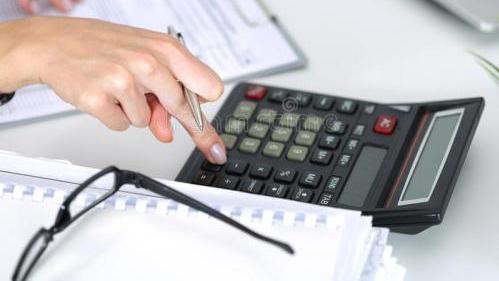第二章 会计要素与会计等式(Chapter 2 Accounting Elements and Accounting Equation):会计要素与会计等式(Chapter 2 Accounting Elements and Accounting Equation)2.1会计对象Accounting Object:主要讲授了会计对象的含义及内容、各类会计主体资金运动的特征,重点讲授了制造业企业、商品流通企业以及行政、事业单位的资金运动及特征。This section introduces the meaning and content of accounting object, the characteristics of capital movements of various accounting entity, and focuses on the capital movements and characteristics of manufacturing enterprises, commodity circulation enterprises, administrative and public institutions.[多选题]下列选项中,属于无形资产的是( )。Those that are intangible asset among the following options are( )选项:[商标权Trademark, 机器设备Machinery equipment, 著作权Copyright, 专利权 Patent]
2.2会计要素(Accounting Elements):主要讲授了会计要素的含义、分类以及内容,重点讲授了资产、负债、所有者权益、收入、费用和利润这六大会计要素。This section introduces the meaning, classification and content of accounting elements, focusing on the six accounting elements of assets, liabilities, owner's equity, revenue, expenses and profit.
2.3会计等式Accounting Equation:主要讲授了会计等式的含义、种类以及经济业务发生对会计等式的影响,重点讲授了经济业务发生对会计等式的影响。This section mainly introduces the meaning, types of accounting equation and the impact of economic business occurrence on accounting equation, focusing on the impact of economic business occurrence on accounting equation.
2.1会计对象Accounting Object:主要讲授了会计对象的含义及内容、各类会计主体资金运动的特征,重点讲授了制造业企业、商品流通企业以及行政、事业单位的资金运动及特征。This section introduces the meaning and content of accounting object, the characteristics of capital movements of various accounting entity, and focuses on the capital movements and characteristics of manufacturing enterprises, commodity circulation enterprises, administrative and public institutions.
2.2会计要素(Accounting Elements):主要讲授了会计要素的含义、分类以及内容,重点讲授了资产、负债、所有者权益、收入、费用和利润这六大会计要素。This section introduces the meaning, classification and content of accounting elements, focusing on the six accounting elements of assets, liabilities, owner's equity, revenue, expenses and profit.
2.3会计等式Accounting Equation:主要讲授了会计等式的含义、种类以及经济业务发生对会计等式的影响,重点讲授了经济业务发生对会计等式的影响。This section mainly introduces the meaning, types of accounting equation and the impact of economic business occurrence on accounting equation, focusing on the impact of economic business occurrence on accounting equation.
[单选题]会计对象是会计所要反映和监督的内容,它界定了会计工作的内容和范围。( ) Accounting object is the content that accounting should reflect and supervise, and it defines the content and scope of accounting work. ( )选项:[对, 错]
[多选题]下列选项中,属于反映企业财务状况的会计要素的是( )。Which of the following accounting elements reflect the financial situation of an enterprise ( ).选项:[负债 Liabilities, 收入Revenue, 所有者权益Owner's Equity, 资产Assets]
[多选题]下列各项中属于流动负债的是( )。Among the following items, the current liabilities are ( ).选项:[应付票据 Notes payable, 应付账款 Accounts payable, 短期借款Short-term loan, 存货Inventory]
[单选题]所有者权益在数值上等于企业全部资产减去全部负债后的余额。( )Owner's equity is equal to the balance of all assets minus all liabilities. ( )选项:[错, 对]
[单选题]非流动负债的偿还期均在1年以上,流动负债的偿还期均在1年以内。( )The repayment period of non-current liabilities is more than one year, and the repayment period of current liabilities is less than one year. ( )选项:[错, 对]
[单选题]下列选项中属于最基本的会计等式的是( )。Among the following options, the most basic accounting equation is ( ).选项:[收入-费用=利润Revenue-expense = Profit, 资产=负债+所有者权益+利润 Assets = Liabilities + Owner's Equity + Profit , 资产=负债+所有者权益+(收入-费用)Assets = Liabilities + Owner's Equity + (Revenue-Expense), 资产=负债+所有者权益Assets = Liabilities + Owner's Equity]
[单选题]企业的库存商品属于会计要素中的( )。Merchandise inventory of enterprises belong to the accounting elements of ( ).选项:[收入Revenue, 资产 Assets, 所有者权益Owner's Equity, 负债 Liabilities]
[单选题]企业所拥有的资产从财产权利归属来看,一部分属于投资者,另一部分属于( )According to the ownership of property rights, the assets owned by enterprises partly belong to investors and partly belong to ( ) .。选项:[债务人 Debtors, 债权人 Creditors, 企业法人 Enterprise juridical person, 企业职工Employees]
[单选题]下列选项中,不属于反映企业经营成果的会计要素的是( )。Which of the following accounting elements does not reflect the operating result of the company ( ).选项:[费用Expense, 利润Profit, 收入Revenue, 所有者权益Owners' equity]
[单选题]下列选项中,不属于反映企业经营成果的会计要素的是( )。Which of the following accounting elements does not reflect the operating result of the company ( ).选项:[费用Expense, 所有者权益Owners' equity, 收入Revenue, 利润Profit]
[单选题]企业的库存商品属于会计要素中的( )。Merchandise inventory of enterprises belong to the accounting elements of ( ).选项:[收入Revenue, 资产 Assets, 所有者权益Owner's Equity, 负债 Liabilities]
[单选题]企业所拥有的资产从财产权利归属来看,一部分属于投资者,另一部分属于( )According to the ownership of property rights, the assets owned by enterprises partly belong to investors and partly belong to ( ) .。选项:[债务人 Debtors, 企业法人 Enterprise juridical person, 企业职工Employees, 债权人 Creditors]
[单选题]下列选项中属于最基本的会计等式的是( )。Among the following options, the most basic accounting equation is ( ).选项:[资产=负债+所有者权益+(收入-费用)Assets = Liabilities + Owner's Equity + (Revenue-Expense), 资产=负债+所有者权益Assets = Liabilities + Owner's Equity, 收入-费用=利润Revenue-expense = Profit, 资产=负债+所有者权益+利润 Assets = Liabilities + Owner's Equity + Profit ]
[多选题]下列选项中,属于反映企业财务状况的会计要素的是( )。Which of the following accounting elements reflect the financial situation of an enterprise ( ).选项:[所有者权益Owner's Equity, 负债 Liabilities, 资产Assets, 收入Revenue]
[多选题]下列各项中属于流动负债的是( )。Among the following items, the current liabilities are ( ).选项:[应付票据 Notes payable, 应付账款 Accounts payable, 存货Inventory, 短期借款Short-term loan]
[多选题]下列选项中,属于无形资产的是( )。Those that are intangible asset among the following options are( )选项:[商标权Trademark, 机器设备Machinery equipment, 专利权 Patent, 著作权Copyright]
[单选题]会计对象是会计所要反映和监督的内容,它界定了会计工作的内容和范围。( ) Accounting object is the content that accounting should reflect and supervise, and it defines the content and scope of accounting work. ( )选项:[对, 错]
[单选题]所有者权益在数值上等于企业全部资产减去全部负债后的余额。( )Owner's equity is equal to the balance of all assets minus all liabilities. ( )选项:[错, 对]
[单选题]非流动负债的偿还期均在1年以上,流动负债的偿还期均在1年以内。( )The repayment period of non-current liabilities is more than one year, and the repayment period of current liabilities is less than one year. ( )选项:[错, 对]
温馨提示支付 ¥3.00 元后可查看付费内容,请先翻页预览!

